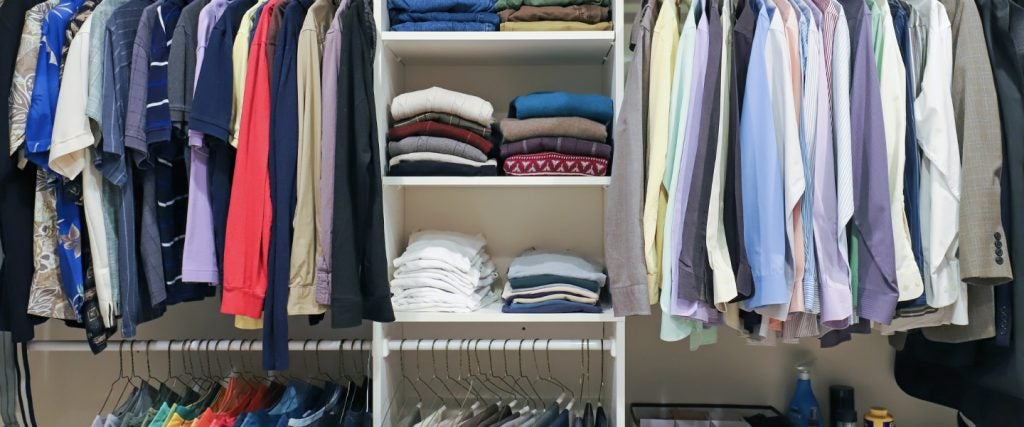No one really knows how many pieces of clothing the average American man owns. Some surveys suggest it’s 77; others say it’s 155. What we do know for certain is that the average person buys 59 garments per year.
That, of course, seems like plenty — especially given the environmental impact of all that textile. But whether that’s considered a lot or a little is a frequent topic of conversation online. A good typical question is this one from the Male Fashion Advice (MFA) subreddit: “Adult men of Reddit, how much clothing do you own?”
The guy who asked it admitted that he’s a bit of a hoarder and tends to “accumulate a LOT of clothing.” But since moving into a small apartment with less than half the closet space, he needed help trying to figure out what he should keep. “For work shirts alone, I probably have about 25 different button-downs — all different colors or styles,” he continued. “And yes, I do actually wear them all, so the old ‘throw it away if you didn’t wear it for a year’ saying doesn’t really apply.” He was also concerned that if he whittled things down to 5-10 pieces, other people would notice that he was just recycling the same fits over and over again.
Irrational? Perhaps. But a fairly pervasive concern nonetheless.
In terms of getting quantitative about things, one MFA commenter points out, “There’s no number that captures what an average guy needs because it doesn’t account for climate (are you in Oslo or Austin?), work (lawyer in D.C. or tech worker in SF?), lifestyle (outdoorsman, hipster, etc.) or other factors.”
And yet, another MFA subscriber couldn’t be more exacting. For him, the perfect number includes two suits, three blazers, five pairs of jeans, 10 pairs of pants, 10 pairs of shorts, 15 T-shirts, 20 button-downs, 10 sweaters, 15 jackets and 25 pairs of shoes. But as he goes on to explain, if he’s being totally honest with himself, he primarily rotates between a quarter to a half of all the clothes he owns.
As such, a third MFA denizen suggests going the “kit” route. “Work kit. Casual kit. Exercise/lounging kit,” he outlines. “This is how I think of my capsule-ish wardrobe.” He stipulates, however, that his approach only works if the kits don’t need to intermingle that much. “If there’s some crossover (i.e., you’ll wear your dress shirts for casual social occasions) then it becomes more difficult,” he admits. “But if you’re like me and keep those styles quite separate, it’s a nice way to think about it.”
To determine what you actually wear and what’s just taking up space in your closet, yet another redditor recommends you “put all your clothes away somewhere else and only introduce clothing back into your rotation/closet when absolutely needed.” Then, after a couple of laundry cycles, you’ll have an idea of your minimum wardrobe — “minus seasonal clothing and maybe one suit.”
A different MFA subscriber, though, recommends being slightly more purposeful: “I’ve organized my clothes so that I have ‘everyday wear’ 65 percent, ‘business casual’ 15 percent, ‘technical and athletic apparel’ 20 percent. By doing so, in my head, I know if I’m adding too much to one section that would potentially take away from another section, both in closet space and budget.”
Honestly, that’s probably the best way to think about it — not in absolutes, but in feel, with the best feeling being when you pass up buying a new shirt because you know you already have seven more exactly like it at home.

